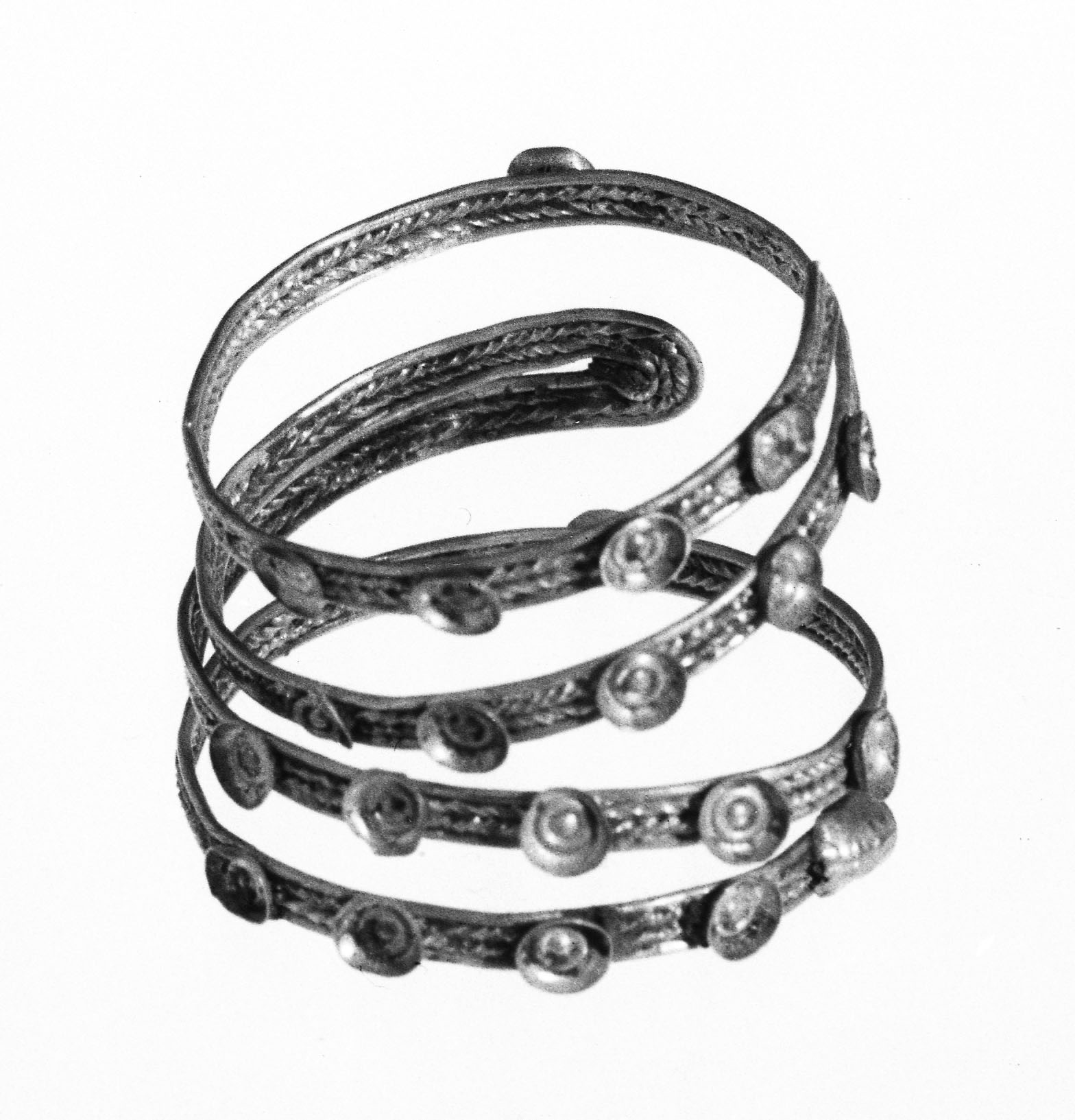Spiral with Round Settings
Spirals made of gold, silver, or bronze are common in Etruscan tombs of the 7th century BCE. Their specific function is unknown; some scholars have suggested they are earring pendants, children's rings, or- most likely- hair ornaments. This gold spiral (like Walters 57.416) is formed from twisted wires and decorated with 20 hollow hemispheres that perhaps once held jewls. Human heads, their faces and hair rendered in repoussé, form the finials.
Provenance
Provenance (from the French provenir, 'to come from/forth') is the chronology of the ownership, custody, or location of a historical object. Learn more about provenance at the Walters.
Joseph Brummer, Paris and New York, [date and mode of acquisition unknown] [as part of the so-called "Jugoslavian Treasure"]; Henry Walters, Baltimore, 1927, by purchase; Walters Art Museum, 1931, by bequest.
Exhibitions
| 2010 | Bedazzled: 5,000 Years of Jewelry. El Paso Museum of Art, El Paso. |
| 2006-2009 | Bedazzled: 5,000 Years of Jewelry from the Walters Art Museum. Frist Center for the Visual Arts, Nashville; The John and Mable Ringling Museum of Art, Sarasota; The Walters Art Museum, Baltimore. |
| 1979-1980 | Jewelry - Ancient to Modern. The Walters Art Gallery, Baltimore. |
Conservation
| Date | Description | Narrative |
|---|---|---|
| 11/30/1978 | Treatment | cleaned |
Geographies
Italy (Etruria) (Place of Origin)
Measurements
H: 15/16 in. (2.4 cm)
Credit Line
Acquired by Henry Walters, 1927
Location in Museum
Not on view
Accession Number
In libraries, galleries, museums, and archives, an accession number is a unique identifier assigned to each object in the collection.
In libraries, galleries, museums, and archives, an accession number is a unique identifier assigned to each object in the collection.
57.415





